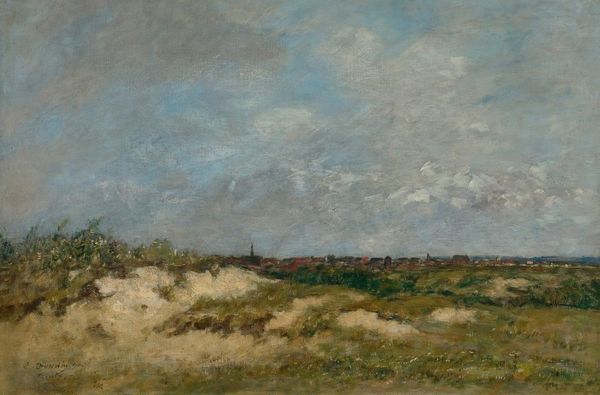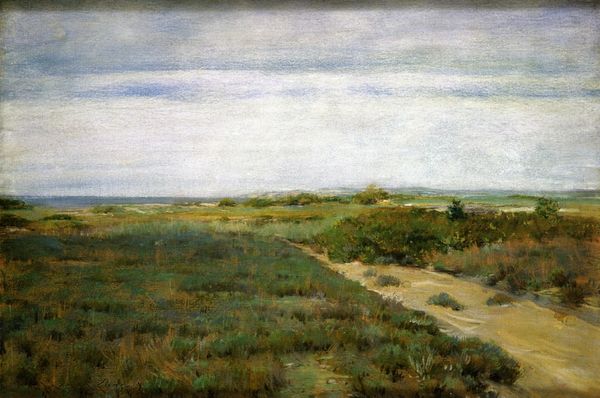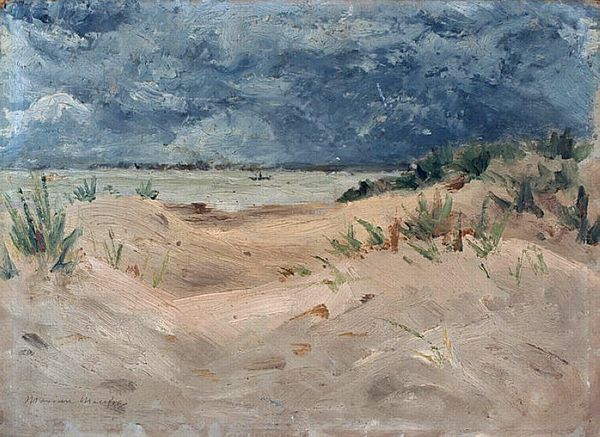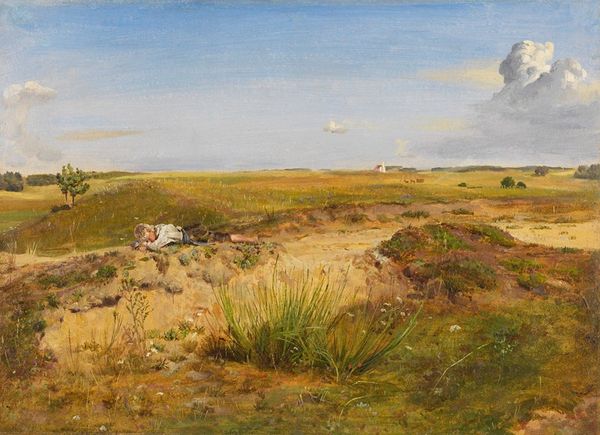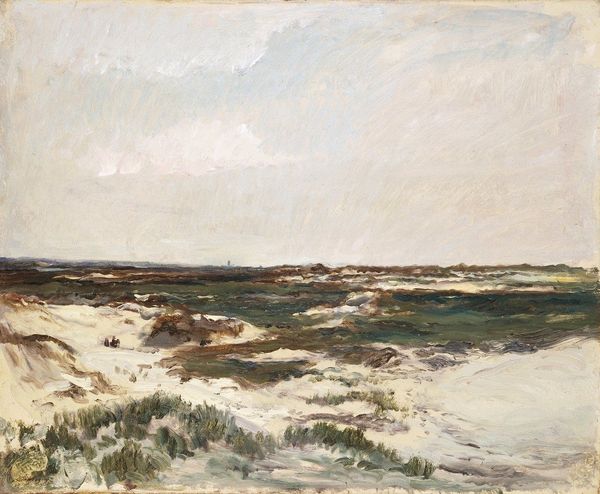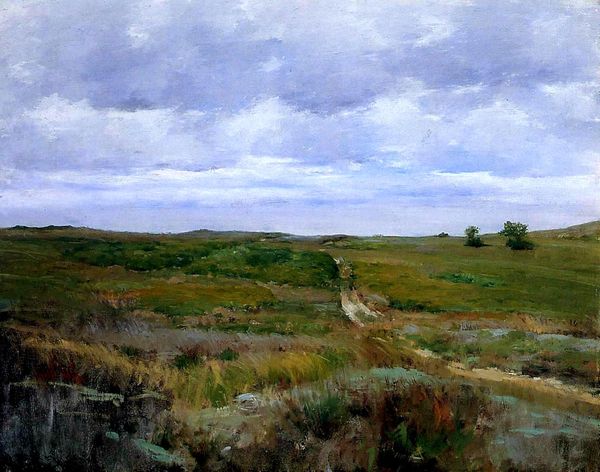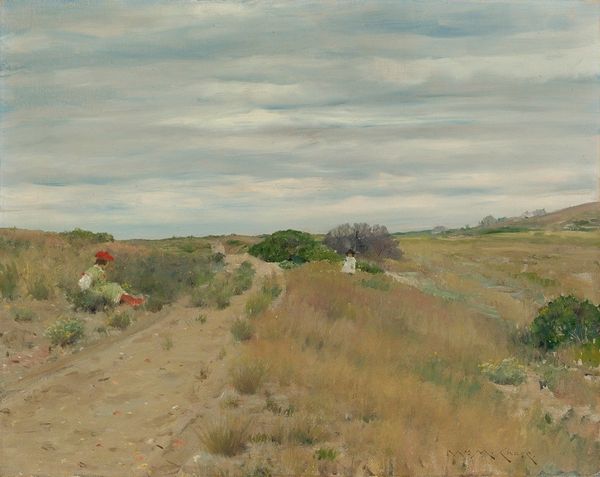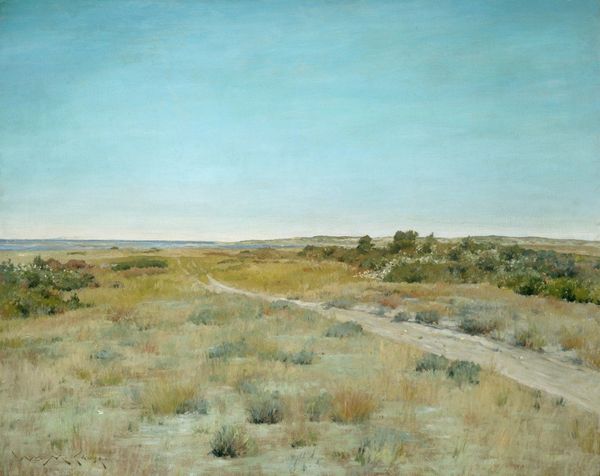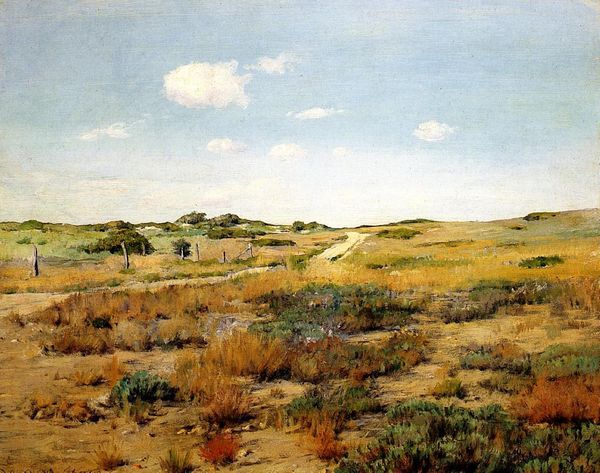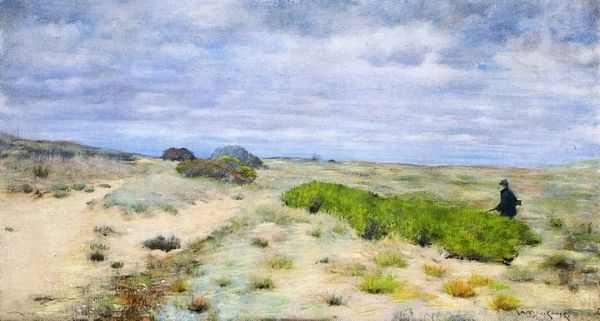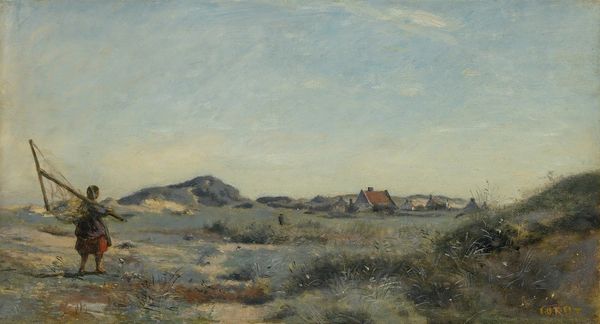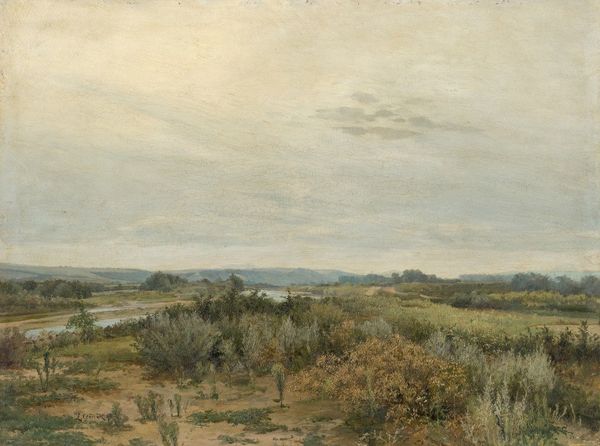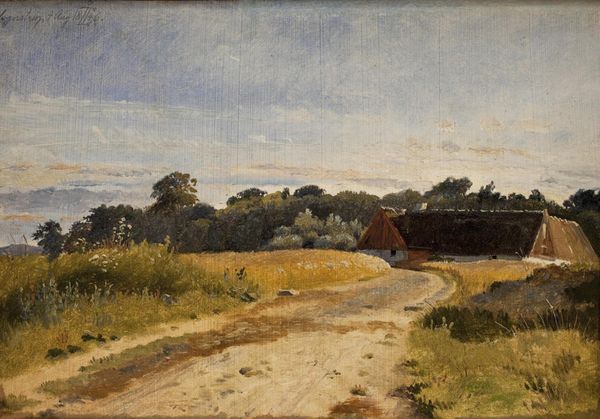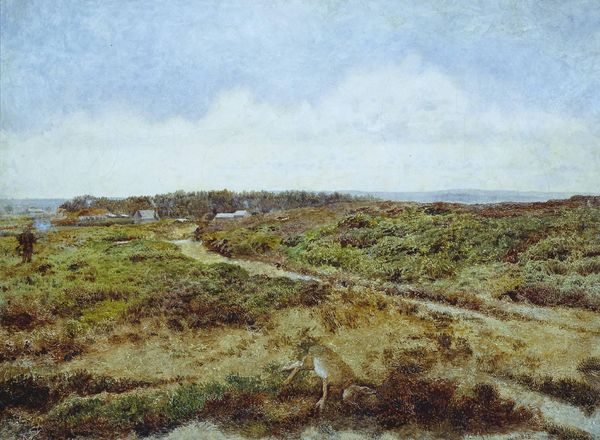
Copyright: Public Domain: Artvee
Curator: Here we have "Wind-Swept Sands" by William Merritt Chase, created around 1894. It’s a superb example of American Impressionism. Editor: My initial thought is that it feels melancholy, doesn't it? The muted palette, predominantly grays and browns, sets a somber tone. And the textured application of the oil paint—it really makes you sense the rawness of the coast. Curator: Chase was quite interested in capturing the American landscape, often focusing on these less-picturesque, seemingly ordinary scenes. It’s important to understand the rise of plein-air painting during this period, which allowed artists to break away from the academic traditions of the studio and engage directly with nature. Editor: Yes, and look at the materiality. The impasto technique, the thickness of the paint – it's all so vital to the work’s expression. I am curious about the surface the artist used; it almost looks like a woven canvas. It makes you think about the labor involved. Curator: Indeed, and it invites comparison with similar coastal scenes painted by European Impressionists at the time, particularly those depicting the beaches of Normandy or Brittany. It speaks to a wider transatlantic artistic exchange and the evolving definitions of modernity. Editor: I also think this challenges the notion of purely celebratory landscapes, typical of earlier American art. Here, you sense the impact of weather, the subtle signs of erosion on the dunes. Even the small clump of grass looks rather worn, reflecting the hardships of working class in harsh landscapes. Curator: I see your point. But it’s also crucial to note that Chase moved in affluent social circles, particularly later in his career. This piece may also represent the rising appeal of the coastal landscape to an increasingly urban American middle class, something perhaps consumed more passively. Editor: Possibly. The layers of socio-economic readings is complex and it really gives me food for thought on artistic production. It’s definitely more than just a simple landscape. Curator: For me, thinking about its place in the art world of its time, Chase used these unassuming views to cement his position. A fascinating picture on many levels.
Comments
No comments
Be the first to comment and join the conversation on the ultimate creative platform.
